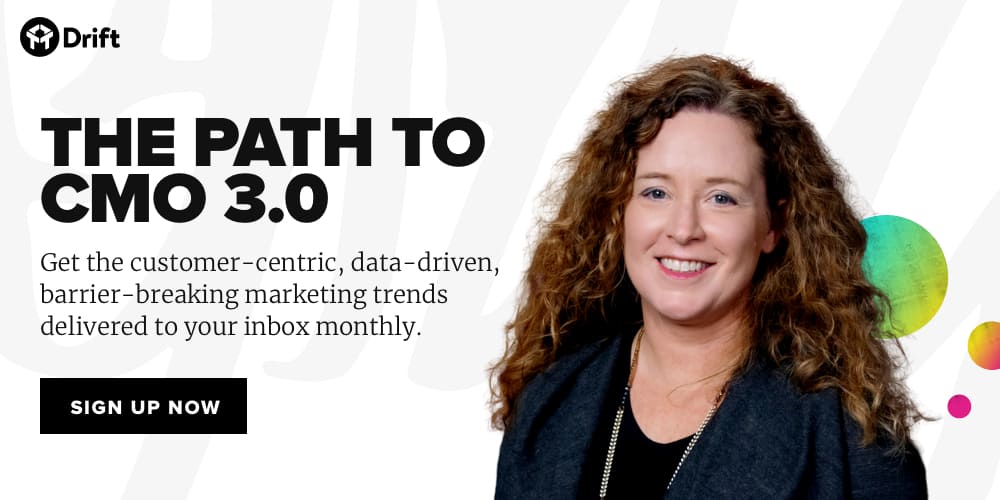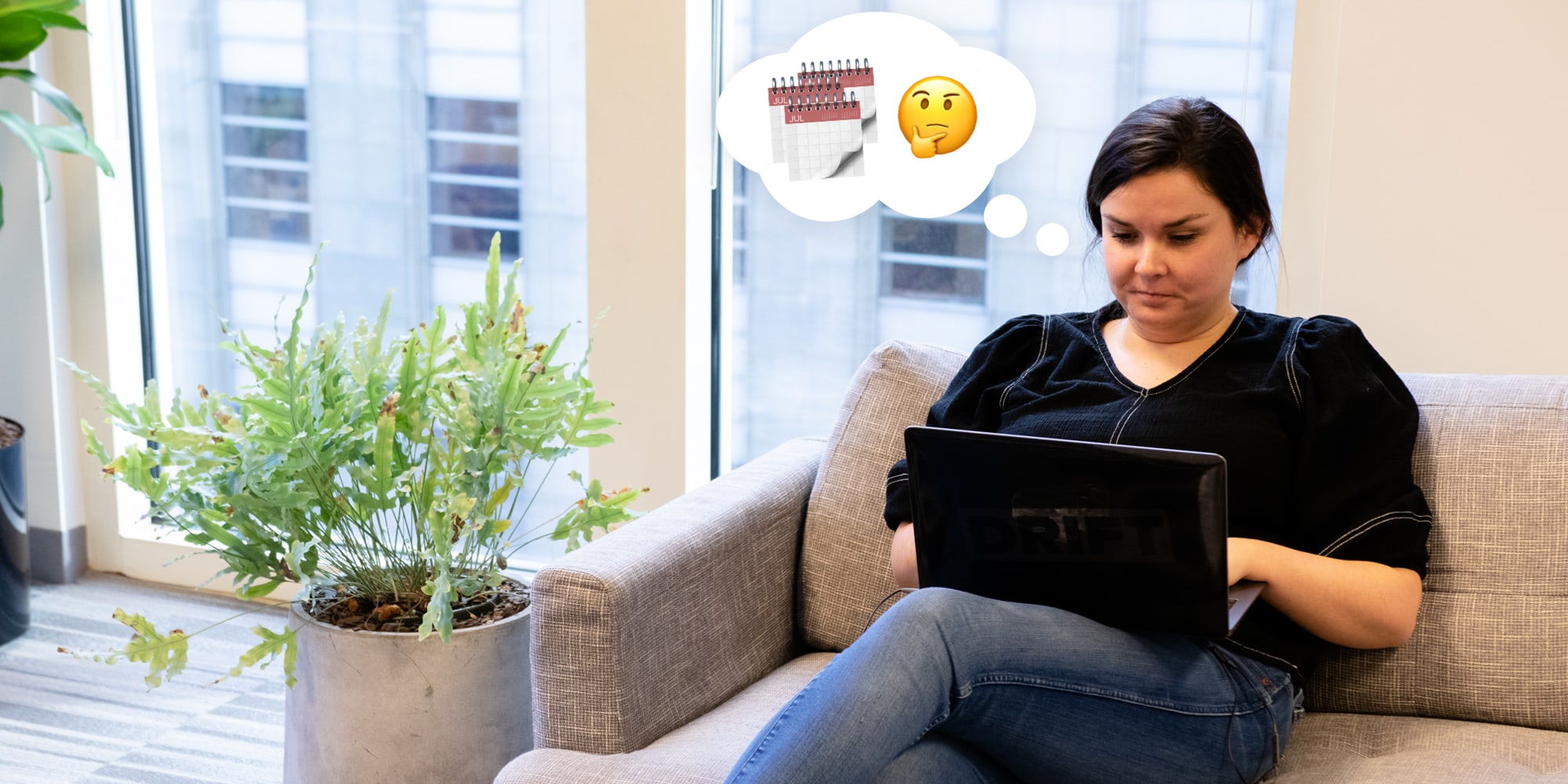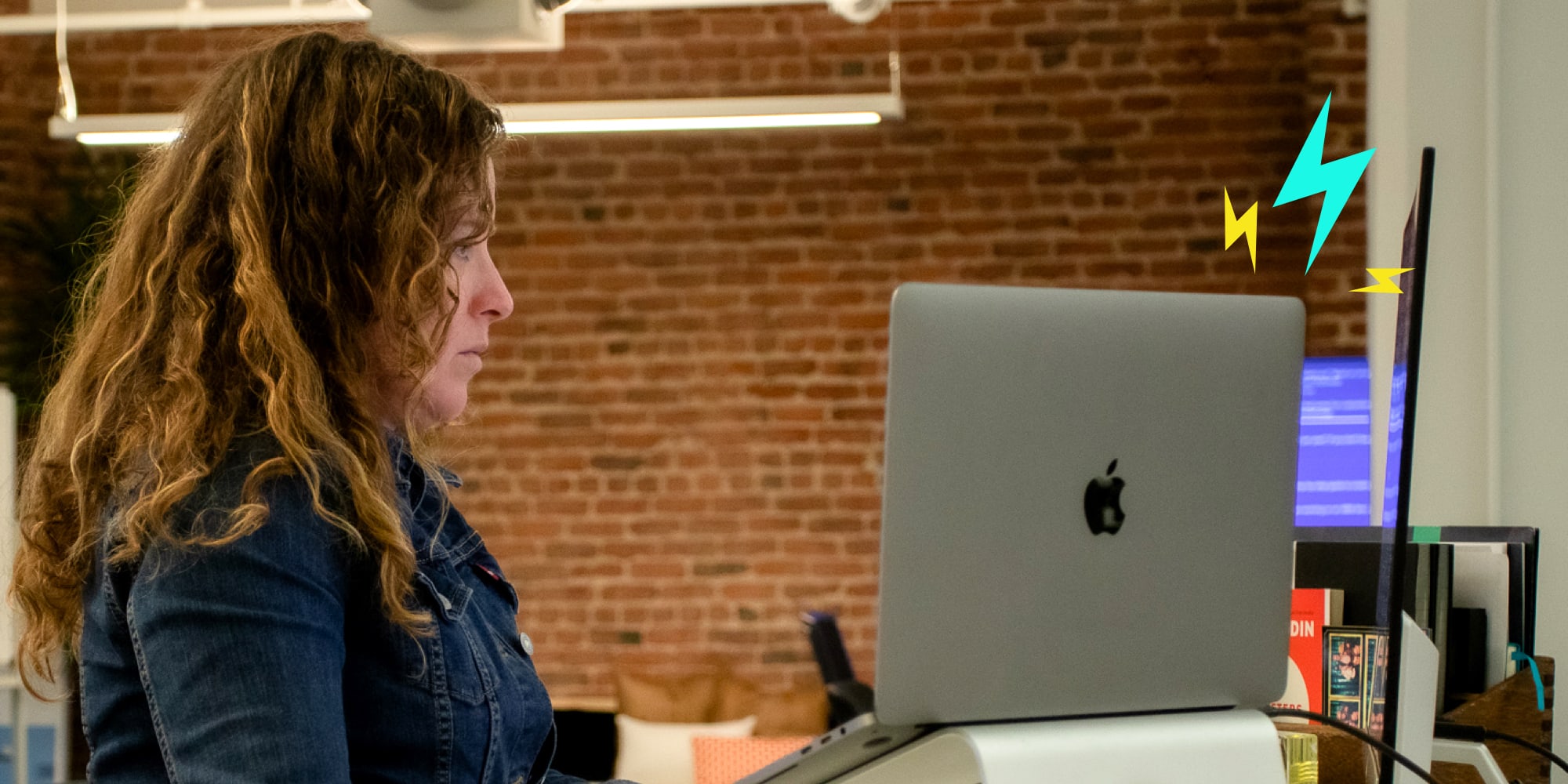Editor’s Note: This interview was first published in our Path to CMO 3.0 newsletter, and was conducted by Tricia Gellman. Subscribe to the newsletter here.
Michelle Boockoff-Bajdek is a decorated marketing executive. She currently leads Skillsoft’s global marketing team, which helps companies unlock the value of talent within their organizations and deliver better outcomes for both employees and businesses at large.
As an executive at the forefront of digital learning, Michelle has unparalleled insight into the state of remote workers. In this interview, we asked her five hard-hitting questions on everything from the future of learning to personal storytelling.
In a hurry? Here’s the tl;dr version:
- Talent & skill-building is forever changed: Remote work is changing how we learn “on the job” and what the future of talent looks like.
- Leaders need to focus on employee mental health: Managing the employee experience during downturns and remote work is testing managers and leaders.
- Brands need to stand for something: Corporate responsibilities around social causes including diversity and racial equality must be met with action, not just lip service.
- It’s time for the c-suite to get real: Getting personal as a CMO about home life may have been frowned on in the past, but today’s executives should be open to sharing personal stories.
- Always be a curious learning machine: Michelle has learned a lot from her podcast guests on The Edge, including:
- How the workplace is evolving
- The importance of getting uncomfortable
- And why learning is a lifelong journey
1. There’s a workplace mantra I’m sure you’re familiar with: “Learning on the job.” In your eyes, how has the pandemic shifted this mindset, and what new role will virtual learning take as more companies transition to remote work?
Learning on the job (or learning in the flow of work) refers to a method of learning that is experiential, not something we set aside separate time to do. Instead, how we learn and gain new skills happen through direct application. I learn as I do.
The pandemic has forced us to shift not only the way we learn, but also what we learn. Seemingly overnight, millions of people went from working in an office to working remotely. They had to focus not only on doing their job, but learn how to do it remotely. This massive amount of change and disruption cannot be overstated. As the pandemic forced organizations to accelerate their digital transformations, it also forced people to accelerate the adoption of new tools and technologies. So, while we’ve continued to learn new skills to help improve the value we bring to the organization, we’ve also had to learn new skills simply to help us get our jobs done.
“The pandemic has forced us to shift not only the way we learn, but also what we learn. Seemingly overnight, millions of people went from working in an office to working remotely. They had to focus not only on doing their job, but learn how to do it remotely.”
I think we’ll see virtual, or digital learning, play an even larger role as we move out of the crisis mode of the pandemic, but are still operating in a world that has changed dramatically:
- Compliance and safety. Not only do we need to provide and administer the necessary regulatory, risk, and compliance courses, but now, we have to train people to live and work safely in a COVID-19 world. Now, more than ever, digital learning must fill the gap left by in-person classes. And today’s leaders must be equipped to navigate the complexities of managing remote, global workforces; motivating teams; and fostering a sense of culture and belonging at all levels within the organization.
- Skills development. Digital learning has come a long way from the didactic style of teaching many of us are accustomed to. We now offer hands-on training through interactive guided sessions, labs, and boot camps that enable learners to gain new or enhance existing skills. As more people around the world come out of this pandemic looking for new jobs, digital learning holds an important role in providing large scale upskilling and reskilling opportunities.
2. How can companies ensure they are addressing the physical and emotional toll of current events on employees?
Working from home was novel, and in some cases, a welcome change back in March at the start of the pandemic. But, reality soon set in when workers went almost entirely remote and we saw a few disturbing trends.
According to the National Bureau of Economic Research, following initial lockdowns and stay-at-home orders, the number of meetings increased by 13%, and the average workday lengthened by more than 45 minutes. When you layer on managing childcare, homeschooling, unavoidable technology challenges, and the accompanying digital fatigue, it’s easy to see why our new reality isn’t as rosy as we once imagined.
“According to the National Bureau of Economic Research, following initial lockdowns and stay-at-home orders, the number of meetings increased by 13%, and the average workday lengthened by more than 45 minutes.”
What we’ve heard from Chief Human Resource Officers (CHROs) is that we have to offer more and greater flexibility to our employees at a time when three seismic shifts have convened to disrupt business as usual:
- A global health crisis: COVID-19
- A widespread social justice movement
- And worldwide economic uncertainty
I recognize that people are looking for a panacea when it comes to addressing the toll on employees, but there isn’t a magic solution. Companies that have seen the best results:
- Have open lines of communication throughout the organization
- Utilize employee feedback gathered during focus groups and surveys to better understand needs
- And provide heavy leadership sensitivity training to ensure that we aren’t just paying lip service to employee well-being
3. 2020 has challenged companies to take a stand on racial and social issues. What do you feel is different this time and what responsibilities do companies and marketers have in giving voice to social injustice?
Systemic racism not only exists but is prevalent and pervasive in our communities and in the workplace. All organizations (including ours) need bold leaders to ignite change and create and sustain long-term momentum. Leaders, at every level, must be equipped to effectively eliminate discrimination and to challenge bias in the workplace.
For Skillsoft, a company focused on helping people learn and grow, this moment has been one of reflection as well as a signal for change and action. We’ve always offered Diversity, Equity, and Inclusion (DEI) training to companies around the globe. But in this new world, training alone will not suffice. Learners have been asking for help as they contemplate a genuine transformation. Questions like: How can I be a better ally? How do I acknowledge and use my privilege to support BIPOC (Black, Indigenous, and People of Color)? How do I move past simply paying lip service to the problem?
“Systemic racism not only exists but is prevalent and pervasive in our communities and in the workplace. All organizations (including ours) need bold leaders to ignite change and create and sustain long-term momentum.”
We knew we had to go further to address systemic racism, discrimination, and bias in a more productive way, a way that would lead to long-term, enduring outcomes. And as marketers, we knew that our actions could not be performative. We had to put our brand to use for the good of the movement. That’s why we partnered with a renowned DEI coach, La’Wana Harris, to design a series of Leadercamps focused on addressing some of the immediate challenges organizations face as they grapple with their own policies. And we made these events available to everyone.
More than 18,000 people registered to attend one of the sessions, and the percentage of registrants who attended was nearly 300% the industry norm. This was gratifying, of course, but it also demonstrated that there is a clear need for this type of content and dialogue.
4. I was very moved by your Medium article where you talked about your daughter spiking a fever and the fear you felt as a mother. What compelled you to share this story and what advice would you give other leaders on sharing personal stories in a professional space?
Someone once told me that the most compelling written pieces are those that come from within.
Since the onset of the pandemic, I’ve become a dedicated blogger, writing about the intersection of life and work. One of my earliest pieces pondered whether we would be better people as we “emerge” from the shelter-in-place mandates. We naively believed that things would return to normal in a few weeks or months and that we’d continue on with our normal lives. But the pandemic has forced us to confront challenges on a myriad of fronts. I haven’t hugged my mother in more than six months. I fall asleep to the news worried that I’ll wake to another shooting or death.
Writing is a wonderful tool for self-reflection and for making sense of a world that has turned upside down. It’s also a powerful way to connect to others – especially at a time when we all feel so disconnected. The most personal stories I’ve shared have also generated the most feedback, with readers reaching out to share their own version of my experience.
5. You’ve had some incredible guests on your podcast, The Edge. What are the three most eye-opening takeaways you’ve learned from your guests this year?
I’m so fortunate to have the opportunity to interview some amazingly talented individuals and I’ve learned a great deal from all of my guests. These, however, are the takeaways that have truly stuck with me:
- It’s not where you are; it’s what you do.
Ester Martinez, CEO of People Matters, and I discussed how the very nature of work and the workplace are evolving rapidly. Many office workers have still been operating with a time clock mentality. They were paid for showing up and being onsite 40 or more hours a week. Now, and as the future shapes itself, people will be paid for their skills and for work produced, not for their physical presence. Going to work won’t mean going to a location anymore. Once work is no longer synonymous with a physical location, people can start to learn, grow, and flex new muscles. In theory, we’ll see a world where employees can live anywhere and work anywhere. Listen to this episode now 🎧
- “Discomfort is a powerful gateway to discovery and innovation.”
As we prepared for our first DEI Leadercamp, I spoke with author, activist, and coach La’Wana Harris about the importance of moving beyond lip service towards driving meaningful change through leadership, guidance, and true purpose. Today’s leaders need far more support as they learn to talk about race and privilege, seek to build and sustain cultures of inclusion, and enable all voices within their organization to be heard. You can learn more about the Leadercamp in our Skillsoft 360 report, Leading Inclusively, How a Leadercamp Encouraged Meaningful Change Within and Without. Listen to this episode now 🎧 - Learning is a journey, not a point-in-time exercise.
I had the fortune to speak with Helen Sussex, the Director of Global Learning Design and Creation for CGI. Even prior to the pandemic, this innovative company created boot camps and intensive training programs to develop and support a more adaptable workforce – something that became incredibly valuable as organizations like CGI responded to the virus – allowing team members to shift their skills and move onto different projects as needs dictated. They were able to adapt because CGI had adopted a culture that embraced the concept of continuous learning. Listen to the episode now 🎧
As a marketer, I’m proud to be the steward of a dynamic brand. But a brand is so much more than the creative messaging and marketing we do. Our brand at Skillsoft is about empowering people to keep learning and delivering their best even in times of upheaval and disruption. Opportunities for advancement should be available to all, regardless of race, gender, identity, or abilities. I’m so proud to know that, at Skillsoft, we inspire people to grow.
Want more insights from Michelle? You can follow her on LinkedIn or on Twitter @MichelleBB.








